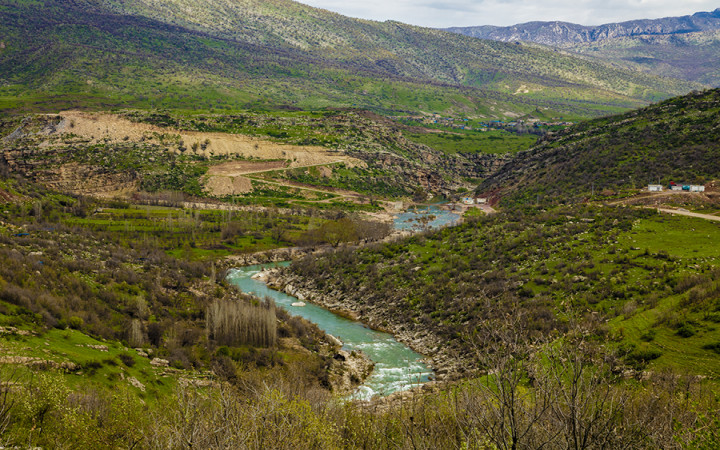Today’s Wonder of the Day was inspired by Logan from KY. Logan Wonders, “Where Is the Tigris River?” Thanks for WONDERing with us, Logan!
Have you ever been to the Middle East? Even if you've never had a chance to visit any countries in the Middle East, you still probably recognize many of their names. Due to the various armed conflicts and civil wars that have taken place over the last several decades, the countries of the Middle East have been in the news frequently.
If you've seen newscasts or stories online about the wars that have taken place in the Middle East, you might have a mental picture of what many of these areas look like. They often appear to be extremely dry desert areas that have been impacted significantly by the conflicts that have raged there for years.
However, these areas were not always like they appear today. In fact, some of these areas have been called "cradles of civilization" by historians, because they were some of the first areas in the world to support the beginnings of true civilizations.
For example, the modern nation of Iraq has been ravaged by a series of wars over the last several decades. Today, it's just a shadow of its former self, still trying to recover from the effects of prolonged conflicts that ripped it apart multiple times.
It's hard for many people to imagine that Iraq was once known in ancient days as Mesopotamia, one of the earliest civilizations known to man. Mesopotamia means "Land Between Two Rivers."
The presence of these two rivers — the Tigris River to the east and the Euphrates River to the west — explains why this area served as a crucible for early civilization. In addition to the Mesopotamians, this area also gave rise to several other early civilizations, including the Sumerians, the Babylonians, and the Assyrians.
The two rivers that defined Mesopotamia flow mostly parallel from the mountains of southern Turkey to the delta in southern Iraq, where they merge to form a river called the Shatt al Arab that empties into the Persian Gulf.
This area is also sometimes called the "Fertile Crescent." The Tigris is mentioned several times in the Bible, and many people believe the area between the Tigris and the Euphrates near the delta was the location of the Garden of Eden described in the Book of Genesis in the Bible.
The Tigris and Euphrates are the two largest rivers in western Asia, with the Euphrates measuring 1,740 miles long and the Tigris 1,180 miles. They're fed from snowfall in the uplands of Turkey, Iraq, and Iran. The water they bring through the arid regions they call home allows for a variety of agriculture and helps to support millions of people.
Unfortunately, the Tigris today faces many challenges. Multiple dams and irrigation projects have reduced both its flow and biodiversity. Add to that the increase in pollution and the effects of multiple wars in the area and you're left with a body of water in serious need of clean-up and proper management.
Various environmental groups are working today to revive and protect the Tigris to ensure that it continues to support the millions of people that depend upon it. At least one group is also hoping to designate the delta marshes in southern Iraq and the country's first national park.




